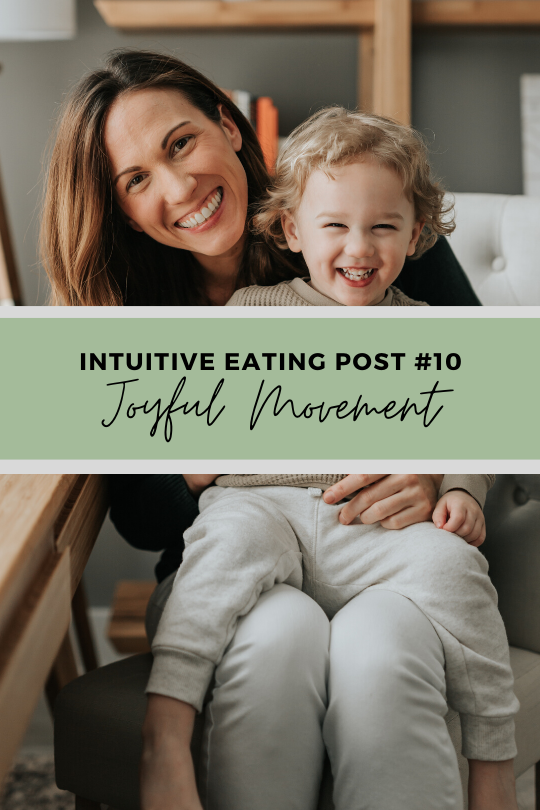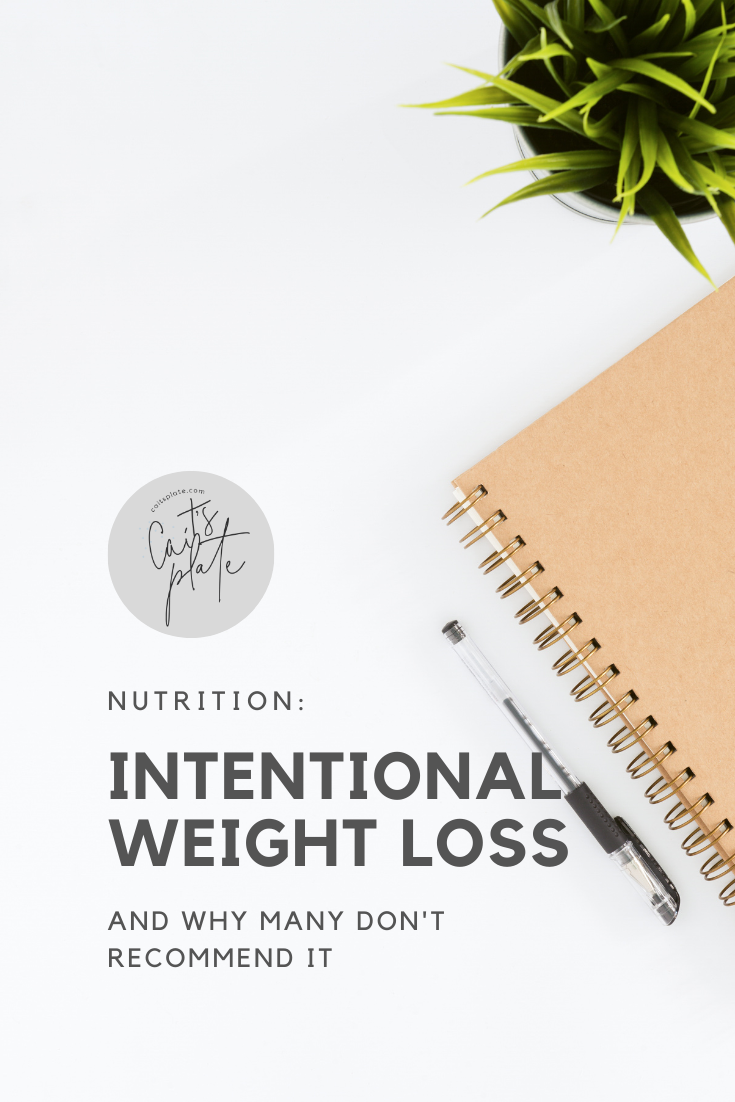walking you through what joyful movement is, how you can begin to implement it and common questions around it.

Moving our bodies as we’re able and in a way that feels good can be great for our health, there’s no disputing it. However, there are a number of circumstances under which doing so actually hurts not only our physical health, but our mental health (you can read more about that here).
Not all, but much of diet and fitness culture (and general ‘wellness’ culture) has programmed us to believe that if we’re not actively working through a fitness program or consistently moving our bodies in a very intentional way, we’re doing something wrong. Not only are we often made to to feel lazy in this situation, but we’re also made to feel like we clearly don’t care about our health. Usually promoted under the guise of health, workout programs tout before and after photos showing little other than how individuals have altered their body with the program (whether by losing inches or gaining certain muscles).
Joyful movement stands in the face of this notion. It promotes moving in a way that simply feels good an in accordance with your desire to be active (in whatever way that looks for you). It pushes back on the idea that exercise needs to be regimented, painful or dreaded in order to provide benefit.
What Is Joyful Movement?
Joyful movement is essentially the intuitive eating version of movement. Where diet and fitness culture often promote working out as a means to shrink or change our bodies in some way, joyful movement instead turns the focus inward. It asks you to think about you enjoy doing. What feels good. It also accepts that perhaps that doesn’t include any formal fitness program at all.
How To Get Started With Joyful Movement:
The best thing you can do to get started with joyful movement is to check in with yourself. Ask yourself the following through a lens of curiosity, not judgement. Remember that all bodies react uniquely to different movement. Think of this simply as an opportunity to learn more about the movement that best supports your overall health:
- What is my current routine, and do I truly enjoy it? Pay attention to how your body & mind feels on different days with different exercises.
- Is my current routine built upon compensatory actions (i.e. working out to make up for something eaten or as a way to change my body shape/appearance)?
- What types of movement make my body & mind feel good? (note that your answer here may be “no movement” or “rest”)
- What types of movement provide me energy (or what types of movement deplete my energy)?
- What types of movement alleviate, rather than amplify my stress?
Once you have a better understanding of where your motivations come from and what movement you truly adds to your life versus what movement tends to detract from your life, you can begin incorporating more of the joyful movement tenants. Namely: turning inward for guidance on how, when, where and in what way to move and focusing on how movement feels rather than how it can change your body.
Frequently Asked Questions About Joyful Movement:
Can I implement joyful movement while training for an event such as a race? You can absolutely implement joyful movement when training for a race. Joyful movement is not anti-movement, it’s pro-flexibility and listening to your body. If you’ve signed up for an event or a race in an arena you truly enjoy doing (not simply as motivation to lose weight), you can 100% work within a loose training schedule. However, don’t get so caught up in the pre-set schedule that you forget to check in with yourself each day. If for instance, you’re training for a long distance run and you happen to have a tempo run on your training calendar, but you check in with yourself realize you’re really not feeling up to it, feel free to shift that run to another day. Instead choose to use this day as a rest day or a day to work in a less intense activity. When I sign up and train for longer distance races, I have a general idea of what training will look like, but it almost never goes according to plan. I often work in many more rest days than are recommended and I constantly shift and change the workouts to meet my daily needs. If you’re working with a trainer or a coach, talk to them about what workouts need to be prioritized and capitalize on the days you feel internally excited to do them to work in those higher priority movements.
What if I just feel best when I workout every day? All our bodies are different. It’s entirely possible that you’re someone that feels better when you move most days . If you find you’re in this situation, I would simply make sure you check in with yourself and ask the following questions:
- What motivates this behavior? It is how good I feel when I do it or is it how guilty I feel when I don’t?
- If exercise didn’t change my body or weight at all, would I still feel this desire to partake in it every day?
- How do rest days make you feel? Happy? Relieved? Anxious? Guilty?
- Do you often look forward to your workouts or are they a source of dread?
- What is the emotional and physical impact on your body & mind before and after exercising?
If in answering those questions you find that a lot of what is driving your motivation to move every day comes from guilt, a feeling of “should” or “have to” – I would re-consider how moving every day is serving your wellbeing. That said, maybe you find much of your motivation centers on the fact that exercise is a stress-reliever, something that helps with mental clarity or provides you energy. As long as you’re flexible in your approach and feel comfortable taking rest days when your body is asking for them, that’s what matters. Remember that the joyful movement approach is not as concerned with frequency or the exercise itself, but the ability to rest when your body needs it, taking joy in the movement you do and allowing for flexibility as needed.
I’m a goal oriented person, can I have goals with joyful movement? You can absolutely have goals with joyful movement. As Ragen Chastain often says, the pillars of athleticism are strength, stamina, flexibility and sports-specific technique. Any one, at any size can work on these, so focus your goals around any one of those, rather than on altering your body size. You can also focus on improving your mood or mental clarity, decreasing your stress or sleeping better through movement. These are all health-promoting goals that have nothing to do with body shape, size or weight.
I work with a trainer, is it possible to continue doing so while practicing joyful movement? Some of that depends on the trainer. You can absolutely have a conversation with your trainer and let them know that you don’t want the focus to be on manipulating your body or losing weight, but rather on, say, improving your mood, helping you sleep better or gaining flexibility. If they agree to this, feel free to push back in moments where you feel they’re crossing the line (“dig deeper” “push harder” “play through the pain”). Remember that they work for you. If they don’t take this push back well, you can always look for someone new (Alissa Rumsey has a great write up on body positive fitness including recommendations for where to find body positive fitness trainers and fitness facilities).
What if I find in practicing joyful movement that no movement makes me happiest? It’s important to remember that you are under no moral obligation to move. Diet culture likes to position it that way, but ultimately, your body is yours to do with what you want. The reality of joyful movement is that it doesn’t have to look any certain way to be right. It doesn’t require a specific number of calories burned or breaking a sweat. It can be as simple as walking up and down the stairs in your house, gardening in your backyard or having an impromptu dance party with your friends. There doesn’t need to be a schedule or consistency. Move in whatever ways feel good to you, whenever it feels good.
Have other questions? Feel free to leave them in the comments or shoot me a DM on Instagram!
You Might Also Like:
Intuitive Eating: Exercise – Feel the Difference

Understanding Intentional Weight Loss

Leave a Reply